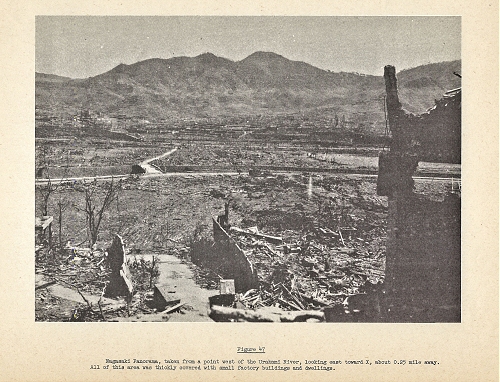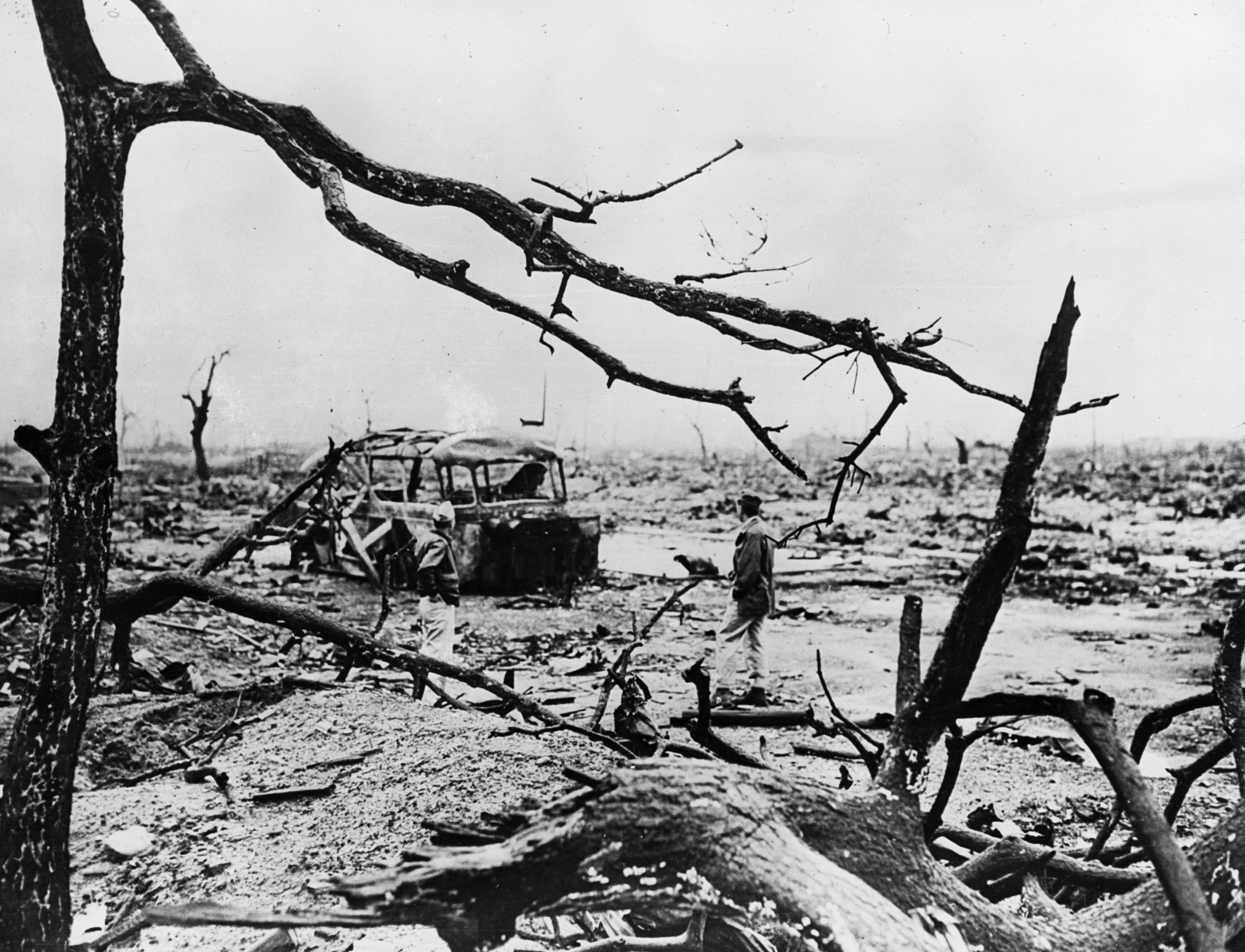
It is uncertain what proportion of these 103,000 deaths, or of the further deaths in military personnel, were due to radiation exposure rather than to the very high temperatures and blast pressures caused by the explosions – 15 kilotons at Hiroshima and 25 kilotons at Nagasaki. About 15 square kilometres (over 50%) of the two cities was destroyed. Unrecorded deaths of military personnel and foreign workers may have added considerably to these figures. (Another figure is 78,500 fatalities, with 5 to 15% of the short-term ones being from radiation.) In Nagasaki, out of a population of 174,000, on the first day 22,000 died and another 17,000 within four months. In Hiroshima, of a resident civilian population of 250,000 it was estimated that 45,000 died on the first day and a further 19,000 during the subsequent four months. The majority would have decayed by the time they landed around the globe. For the most part, however, these fission products were carried high into the upper atmosphere by the heat generated in the explosion itself. This happened at positions a few kilometres to the east of Nagasaki, and in areas to the west and north-west of Hiroshima. Some deposition occurred however in areas near to each city, owing to local rainfall occurring soon after the explosions. Since the bombs were detonated at a height of some 600 metres above the ground, very little of the fission products were deposited on the ground beneath. The devastating effects of both kinds of bombs depended essentially upon the energy released at the moment of the explosion, causing immediate fires, destructive blast pressures, and extreme local radiation exposures. The effects of the Hiroshima and Nagasaki bombs Hence the need to test it, and in fact the plutonium was first used for a test explosion at Alamogordo in New Mexico on 16 July 1945, ushering in the nuclear age with all its threat and promise. However, the design of a plutonium bomb is very much more complex than one using enriched uranium. * Several natural nuclear reactors functioned about 2 billion years ago in Africa. The plutonium-239 generated in these could be separated by simple chemical methods, with no need for the complexities of isotope separation.

This paved the way for more substantial production reactors at Hanford. It used highly purified graphite to slow the neutrons released in fission to enable further fission. During 1942, under conditions of wartime secrecy, the first human-designed reactor* had been constructed, in a squash court at the University of Chicago. The 21 kiloton explosive charge for the bomb detonated over Nagasaki three days later was provided by about 6.2 kilograms of plutonium-239 (>90% Pu-239), and its preparation depended on the operation of special nuclear reactors built for the purpose. It was released over Hiroshima, Japan's seventh largest city, on 6 August 1945. it was equivalent to 16,000 tonnes of TNT). About 64 kilograms of highly-enriched uranium was used in the bomb which had a 16 kiloton yield ( i.e. As UF 6, there is about a one percent difference in mass between the molecules, and this enables concentration of the less common isotope. This was prepared by diffusion enrichment techniques using the very small differences in mass of the two main isotopes: U-235 (originally 0.7% in the uranium) and U-238, the majority. The Hiroshima bomb was made from highly-enriched uranium-235. Several factors suggest that nuclear power has a much larger role to play in supplying the world's future energy needs, and this is supported by every reputable projection. Today, as the main nuclear arsenals are being dismantled and a comprehensive test ban treaty is in sight, commercial nuclear power provides a significant portion of the world's electricity.

Nowhere is the transition from weapons of destruction to power for good better displayed than Hiroshima and Nagasaki in Japan which have come to depend substantially on electricity from nuclear energy.

In the following years several governments joined the arms race, while internationally, efforts were focused on constraining the threat of nuclear weapons proliferation.įrom the 1950s the power of the atom was harnessed increasingly for peaceful uses, notably electricity generation and medicine. The immense and previously unimaginable power of the atom had been demonstrated. These brought the long Second World War to a sudden end. Two atomic bombs made by the allied powers (USA and UK) from uranium-235 and plutonium-239 were dropped on Hiroshima and Nagasaki respectively early in August 1945. Hiroshima, Nagasaki, and Subsequent Weapons Testing


 0 kommentar(er)
0 kommentar(er)
